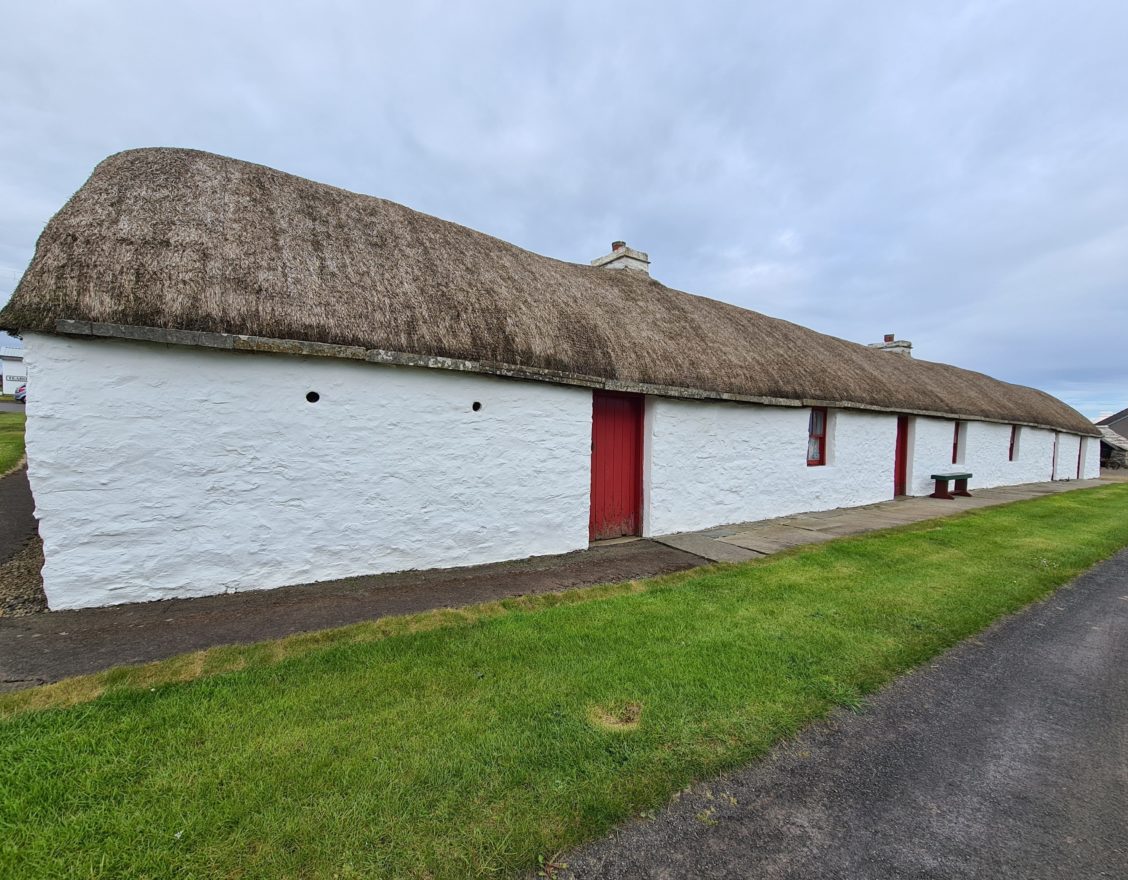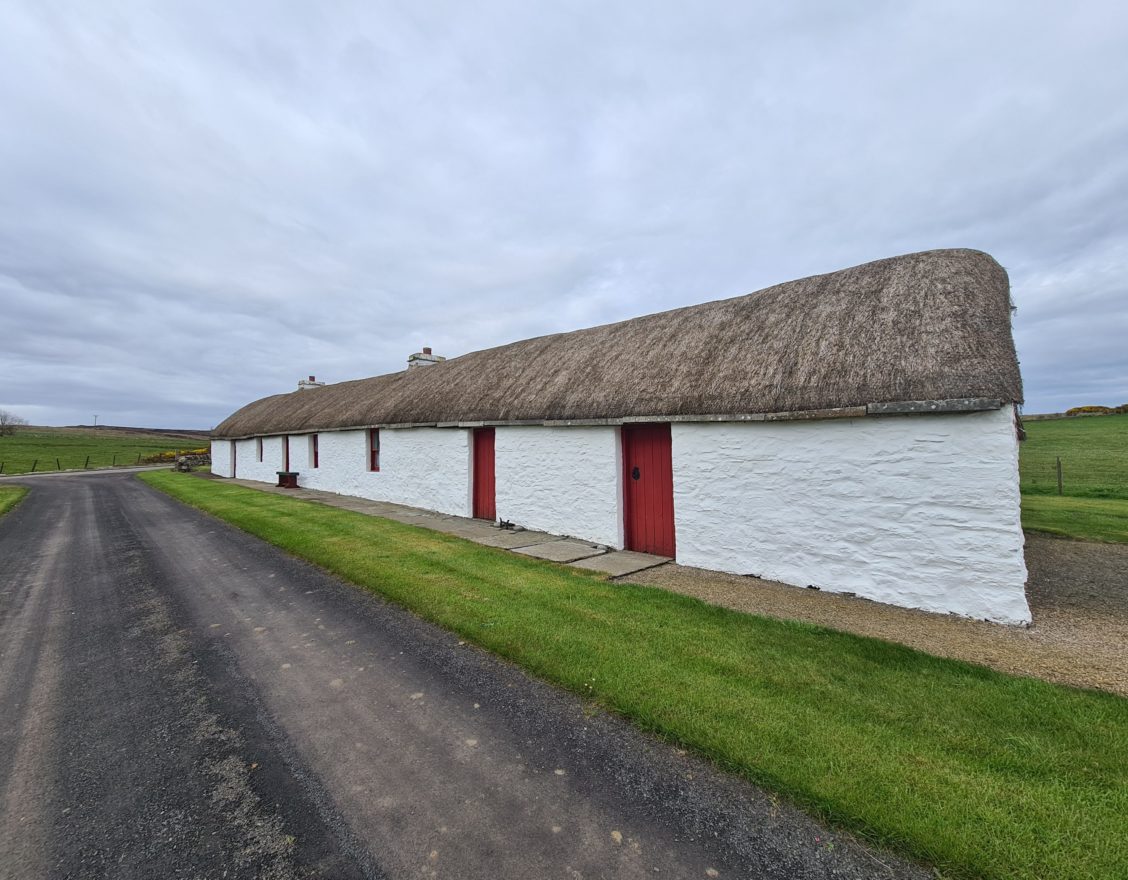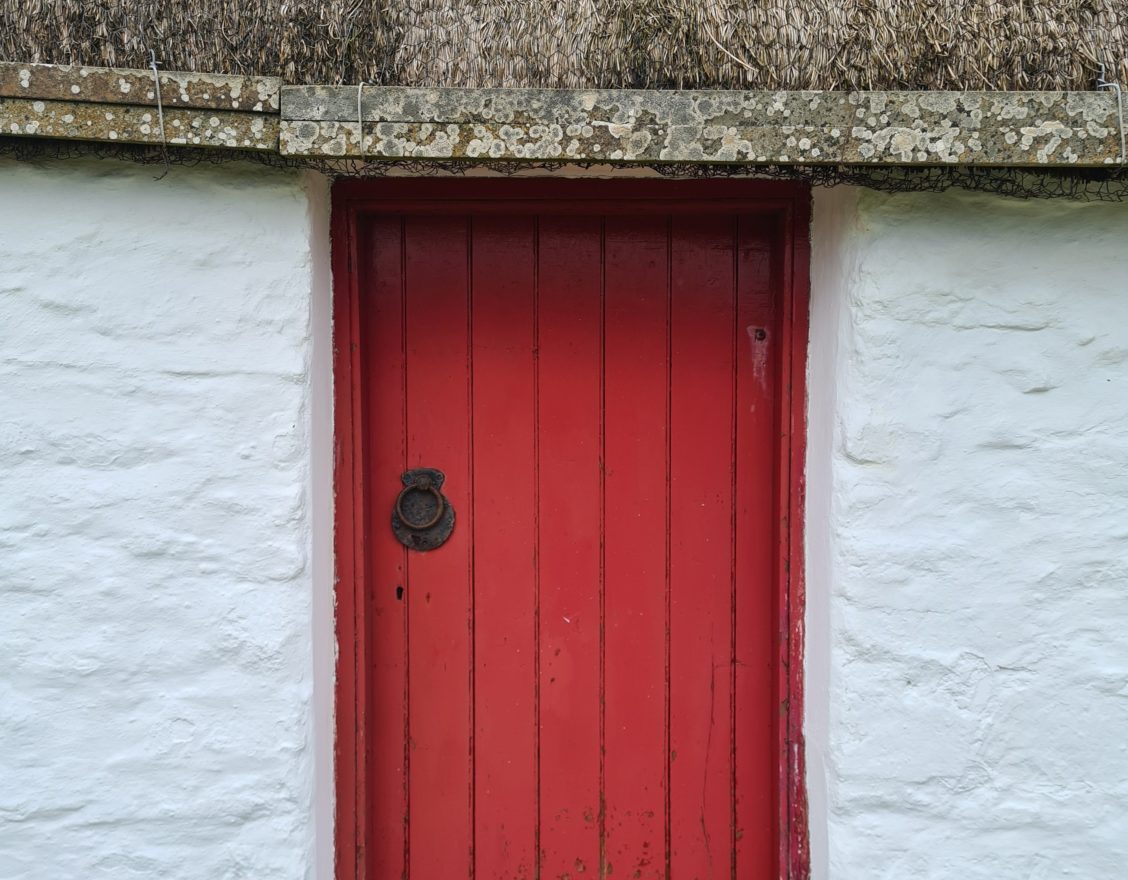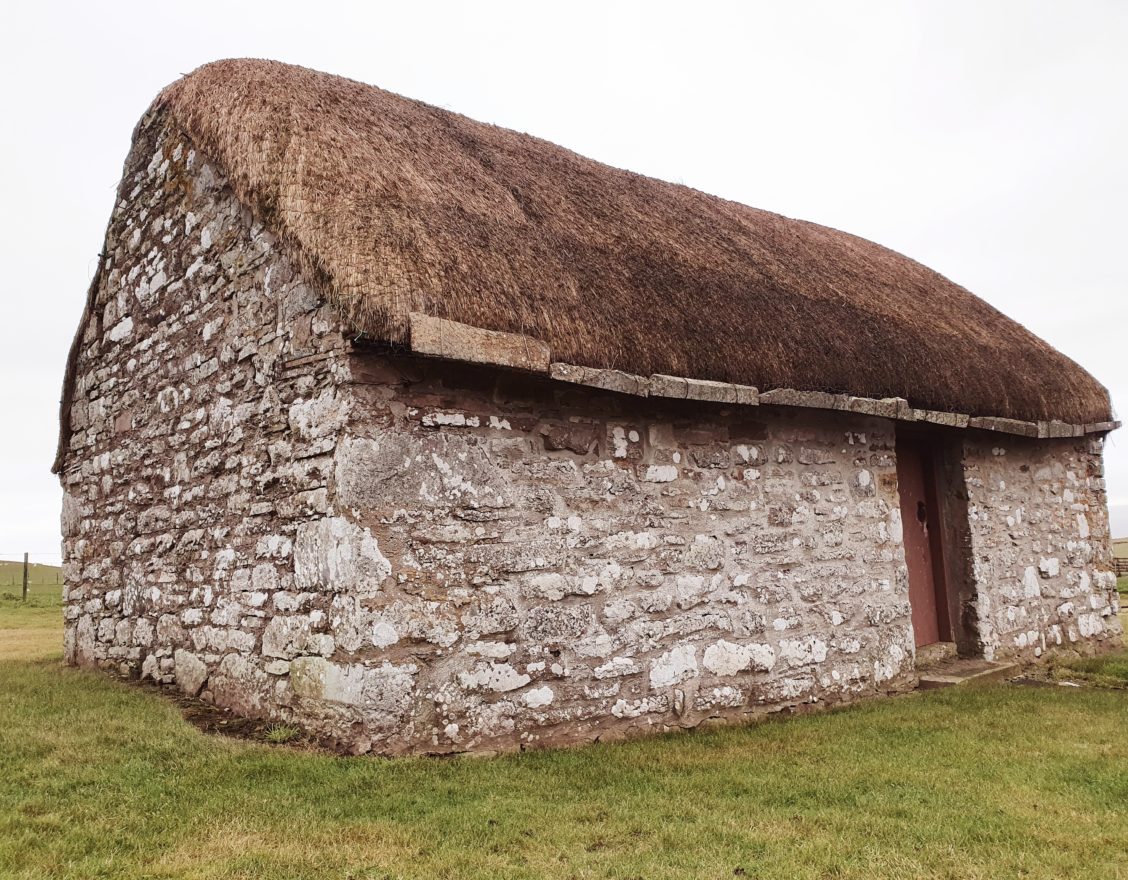Laidhay Croft Museum
A 200 year-old rush-thatched Caithness longhouse showcasing agricultural life in Caithness during the 18th and 19th centuries. Visit the museum to learn more about traditional crofting practices and the county's rural past.
what3words Location
Distance
- N/A
Parking
- Parking in front of the building.
Accessibility
- Fitness Level 1: Very Easy
- Wheelchair Accessible
- Pram Accessible
Additional Information
Just north of Dunbeath, Laidhay Croft is a typical example of the older style of Caithness croft dwellings, familiar features of the agricultural landscape prior to improvements in the 18th and 19th centuries. Laidhay, comprising 16 acres of arable together with rights over 15 acres of rough grazing, came into the the possession of the Bethune family in 1842 and remained with them until 1968 - William Beil was the last to live on the croft.
In 1969, the building came up for sale and was purchased by Malcolm Cameron. It was also about this time that Mr Bert Mowat, proprietor of the Portland Arms Hotel in Lybster, made the suggestion that the croft should be restored as a museum. In 1970, the Laidhay Trust was set up with the building finally opening to the public in 1974.
The Croft Museum incorporates the modified longhouse of the main building – the dwelling, with the stable and byre at each end, the detached barn with the original cruck roof and a cart shed to the south. There is also a modern shed, built to contain the museum's large collection of farming implements.
If you are interested in crofting history and the rural past, or if even if you are simply exploring Caithness, visit the museum to see how people lived and worked, and Laidhay's role in the local community.

Did You Know?
Laidhay is a typical example of a rush-thatched Caithness longhouse, and is over 200 years old!



